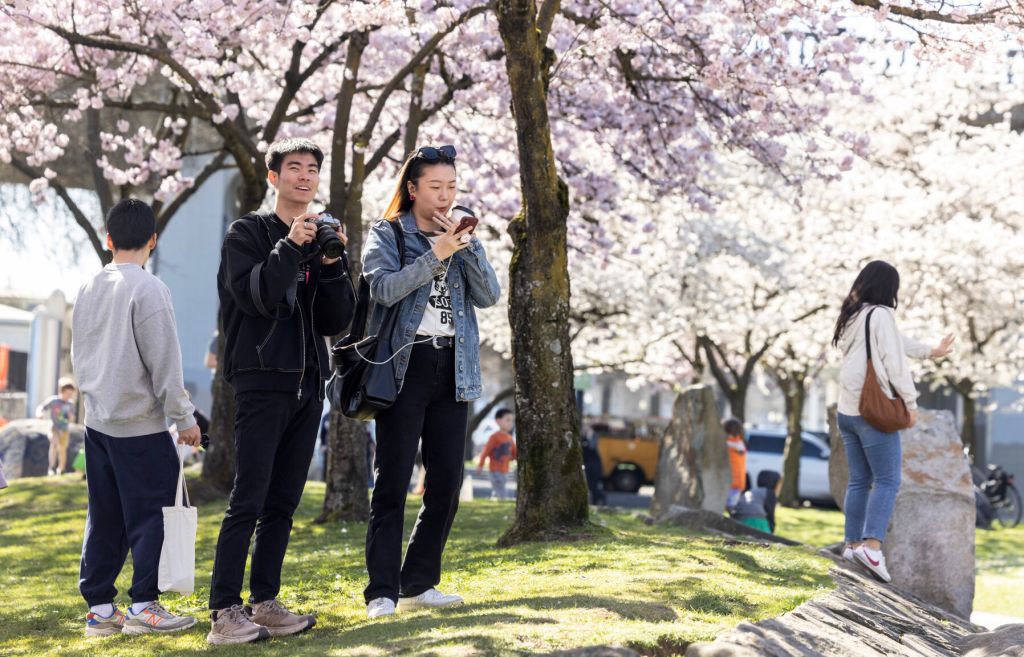Park lovers rejoice: Portland maintains top spot in national parks ranking
Published 4:30 am Wednesday, May 21, 2025

- Portlanders showed up en masse during the annual blooming of cherry blossoms in the spring at the Japanese American Historical Plaza near Waterfront Park in 2024. (Jonathan House/Portland Tribune)
Park lovers rejoice.
Portland is giving the city a good name in the world of parks, for the third year in a row.
The Trust for Public Land, a national nonprofit that connects people to the outdoors, announced its 2025 ParkScore index on Wednesday, May 21.
Trending
Portland claimed ninth place out of 100, matching last year’s finish and marking the city’s third consecutive year in the top 10.
“Parks bring people together and deliver enormous physical and mental health benefits for visitors,” Dr. Carrie Besnette Hauser, president and CEO of Trust for Public Land, said in a news release.
Among the best of the best, along with Portland, are: Washington, D.C.; Irvine, California; Minneapolis, Minnesota; Cincinnati, Ohio; St. Paul, Minnesota; San Francisco, California; Arlington, Virginia; Seattle, Washington; and Denver, Colorado.
The annual ParkScore index ranks park systems in the 100 most populous U.S. cities and is considered a “gold standard” for park evaluation.
“At a time when so much in our nation seems fractured or polarized, parks may be the last ideology-free zones, where everyone can come together, form meaningful relationships, and enjoy a few hours of peace and relaxation,” Hauser said in a statement.
Methodology
ParkScore rankings are based equally on five factors:
- Park access measures the percentage of residents living within a 10-minute walk of a park.
- Park equity compares per capita park space and 10-minute-walk park access in communities of color versus white communities and in low-income neighborhoods versus high-income neighborhoods. Park systems score higher if disparities are minimal or non-existent.
- Park acreage is based on a city’s median park size and the percentage of city area dedicated to parks.
- Park investment measures park spending per resident.
- Park amenities assesses the availability of seven popular park features: basketball hoops; off-leash dog parks; playgrounds; splashpads and other water-play structures; sports fields; recreation and senior centers, and restrooms.
Trending
Geographic information systems and spatial analysis is used to evaluate park accessibility. The technology considers the location of park entrances and physical obstacles to access, according to a press release.
For example, if residents are separated from a nearby park by a major highway, the ParkScore index does not count the park as accessible to those residents, unless there is a bridge, underpass or easy access point across the highway.
ParkScore information helps leaders guide park improvements, study park accessibility and pinpoint areas where new parks are most needed.
How did Portland score per category?
Portland got a boost to ninth place with the help of its “especially high” scores for park access and park investment, according to a news release.
Let’s look at the numbers from this year compared to last year’s:
- Park access: In Portland, 89% of residents live within a 10-minute walk of a park, well above the ParkScore average of 76%. This is down 2% from last year’s ranking, with 91% of residents living within a 10-minute walk of a park.
- Park equity: Portland scored one less point than last year, with a score of 55 points. Last year, the city scored 56 points.
- Park acreage: Portland scored 62 points this year compared to 66 points in 2024.
- Park investment: Portland spends $274 per person on its park system, more than double
the national ParkScore average of $133. Last year, the city spent $233 per capita. - Park amenity: Portland scored 77 points this year compared to 68 points in 2024.
In 2024, Portland scored 74 points out of 100 based on an average of the five categories. This year, the city scored 76, about one point higher than Denver.
Since 1972, TPL has protected more than 4 million acres of public land, created more than 5,504 parks, trails, schoolyards and iconic outdoor places, and raised $110 billion in public funding for parks and public lands, and connected nearly 9.7 million people to the outdoors.
Visit the ParkScore website for more information: tpl.org/parkscore.







